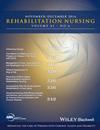阅读评估科学出版物的六个步骤:发现一条不同的道路
IF 1.1
4区 医学
Q3 NURSING
引用次数: 0
摘要
摘要背景有效阅读科学出版物,例如,提高研究/质量,是一项后天习得的技能。批判性评估确定文章在可信度和真实性或适当标准方面的优势和劣势。目的激发康复护士的阅读兴趣/参与度,以评价已发表的研究(使用简短的评价问题)。步骤方法按顺序阅读:(1)标题、摘要和关键词(这些词是否清晰并与已识别的问题直接相关?),(2)讨论和结论(结果/发现如何解释;是否有行动建议?),(4)文献的介绍和审查(研究/项目的主要论点是什么;研究是否建立在已知的基础上?),(5)数据收集和分析方法(是否描述了收集信息和评估的材料/程序?),以及(6)参考文献(引用是否准确/最新?)。讨论/相关性/结论在这条道路上采取的步骤有助于缩小阅读评估科学出版物的差距,发现建立循证康复护理实践的方法。本文章由计算机程序翻译,如有差异,请以英文原文为准。
Six Steps in Reading to Appraise Scientific Publications: Discover a Different Path
Abstract Background Effectively reading scientific publications, for example, research/quality improvement, is an acquired skill. Critical appraisal identifies articles’ strengths and weaknesses related to credibility and authenticity or appropriate standards. Aim To stimulate rehabilitation nurses’ interest/participation in reading to appraise published studies (using brief evaluation questions). Steps Approach Read in this order: (1) title, abstract, and key words (are these words clear and directly connected to identified problem?), (2) discussion and conclusion (how are results/findings interpreted; are there recommendations for actions?), (3) results/findings (do key outcomes relate to the problem?), (4) introduction and review of literature (what are main arguments for study/project; does the study build on what‘s already known?), (5) data collection and analysis methods (are materials/procedures described for gathering information and evaluation?), and (6) references (are citations accurate/up-to-date?). Discussion/Relevance/Conclusion Steps taken on this path help close the gap in reading to appraise scientific publications, discovering ways to build evidence-based rehabilitation nursing practices.
求助全文
通过发布文献求助,成功后即可免费获取论文全文。
去求助
来源期刊

Rehabilitation Nursing
医学-护理
CiteScore
1.90
自引率
7.70%
发文量
68
审稿时长
>12 weeks
期刊介绍:
Rehabilitation Nursing is a refereed, award-winning publication and is the official journal of the Association of Rehabilitation Nurses. Its purpose is to provide rehabilitation professionals with high-quality articles with a primary focus on rehabilitation nursing. Topics range from administration and research to education and clinical topics, and nursing perspectives, with continuing education opportunities in every issue.
Articles range from administration and research to education and clinical topics; nursing perspectives, resource reviews, and product information; and continuing education opportunities in every issue.
 求助内容:
求助内容: 应助结果提醒方式:
应助结果提醒方式:


